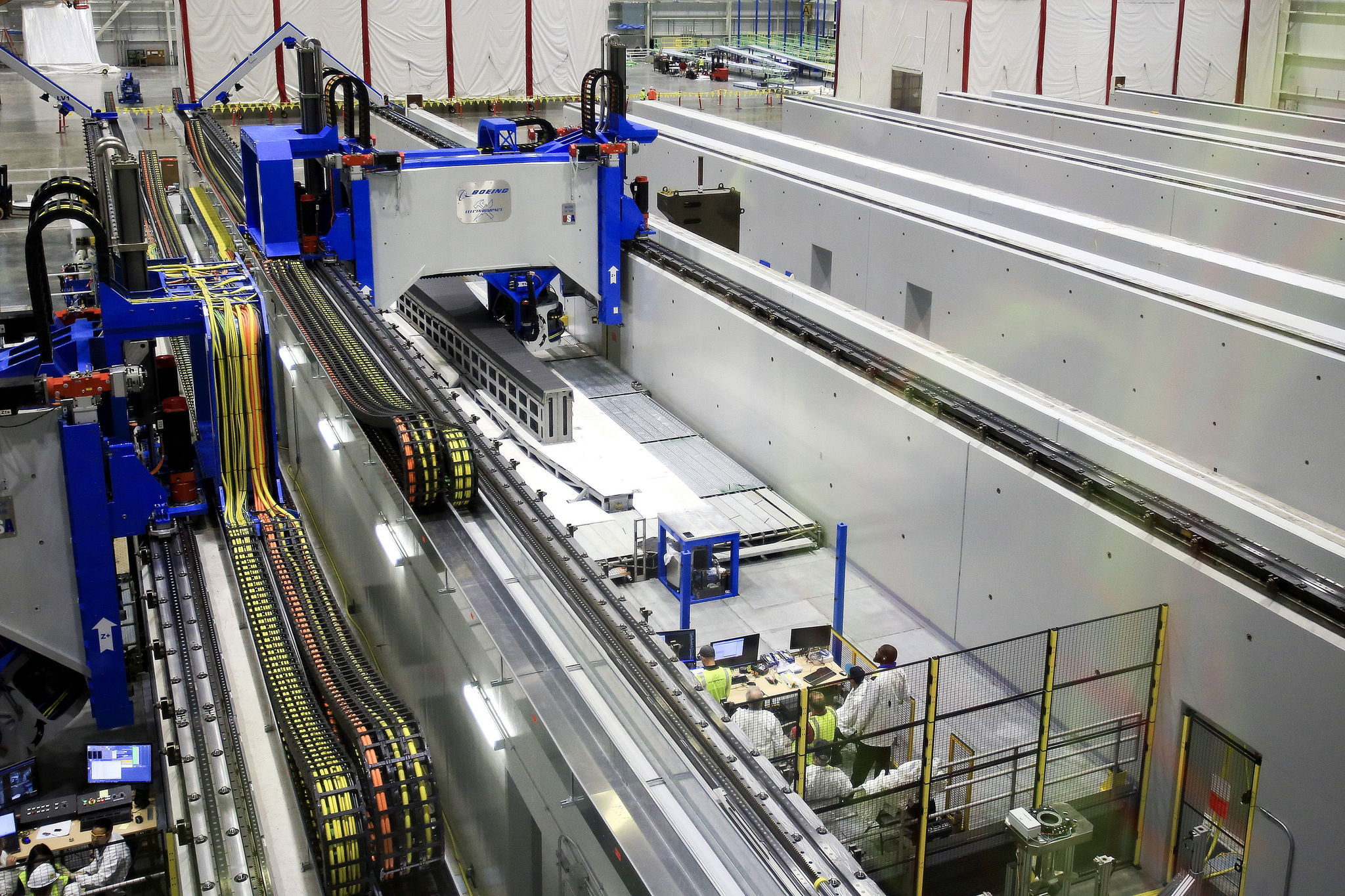Boeing will celebrate its past in grand fashion at its centennial in July, but its future was on full display last month at the Everett plant.
That’s where the aerospace manufacturer unveiled its new Composite Wing Center, a $1 billion, 1.3 million-square-foot facility to build carbon-fiber wings for the 777X jetliner.
The Composite Wing Center is seen as key to the 777X program, because it will be where the jetliner’s innovative carbon-fiber composite materials wings will be manufactured.
The building will initially house one autoclave, essentially a giant pressure oven used to cook and harden the carbon-fiber wings. It is designed to eventually hold three autoclaves. Portland, Oregon-based Hoffman Construction started work on the building in October 2014. At its peak, an estimated 1,200 workers put in time on the building; a total of 4.2 million hours went into the construction.
The center is huge. It’s 27 acres of space under one roof or the equivalent of 24 football fields, according to Boeing.
To get a sense of the size, just look at the construction materials: 31,000 tons of steel, 340.2 million pounds of concrete and 486 miles of electrical cable.
The autoclave is one of the world’s largest by volume: It can hold more than 200,000 14-inch pizzas.
Here are some questions and answers on the Composite Wing Center and what it means for the future of the company:
Why is this such a big deal?
Carbon-fiber composites are being used more and more in manufacturing, from cars like BMWs to planes. Boeing’s 787, used more composite material than any other commercial airplane when it was launched in 2004.
Carbon-fiber composites are prized for a high strength-to-weight ratio. They don’t easily fatigue or corrode like metal.
They’re easy to mold and shape; bonded structures are smoother and more aerodynamic than those that are riveted.
Carbon-fiber composites require special storage and handling and expensive equipment to create. They require a skilled work force to create and repair. And composites are expensive.
Why is this important to the 777X?
The 777X will use even more carbon-fiber composites than the 787. With the composite material wings, the 777X is expected to boast lower fuel consumption and operating costs than the competition.
That’s appealing to customers who above all else want an aircraft that is efficient to operate. With this giant new conclave, Boeing will be able to build wings that have fewer pieces.
Has work started in the center?
Boeing opened the Composite Wing Center on schedule in May. But the company doesn’t expect to begin actual production until 2017. The first delivery of the 777X is targeted for 2020.
So far, Boeing has received 320 orders for 777X planes and commitments from six customers worldwide.
How many people will it employ?
Boeing’s not saying, at least not right now. However, according to site selection documents sent by Boeing to various states in late 2013, the 777X line is expected to have about 3,250 workers in 2018, peak at 8,500 in 2024 and scale down to about 7,250 by 2026. The wing production center will have more than 2,000 workers, according to those documents.
Talk to us
> Give us your news tips.
> Send us a letter to the editor.
> More Herald contact information.
























